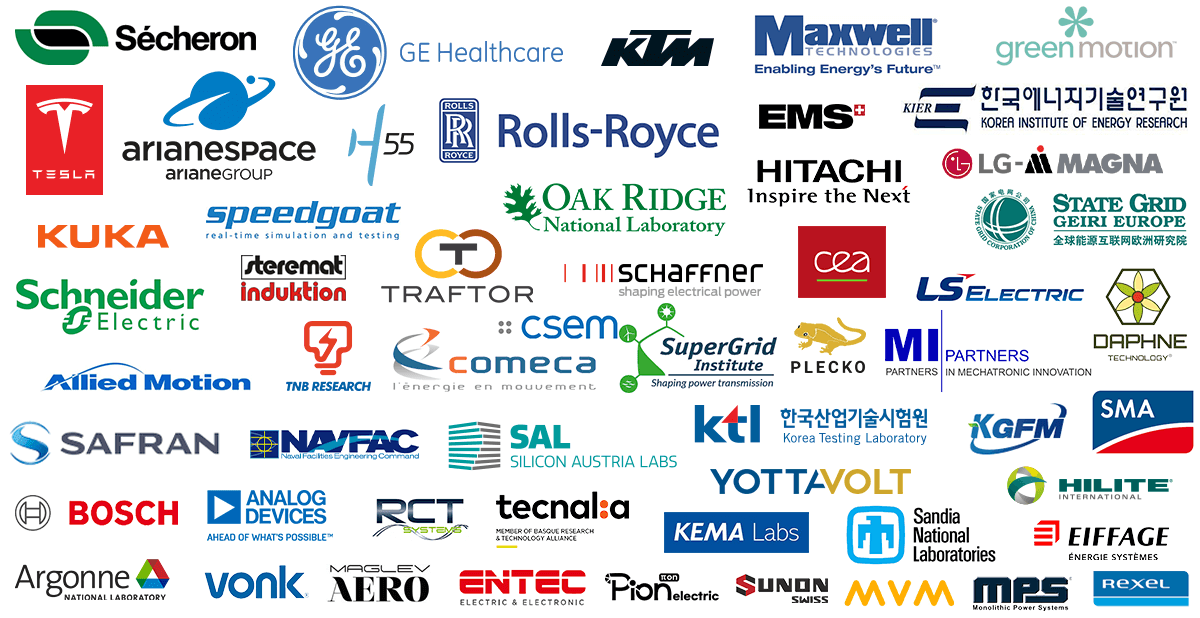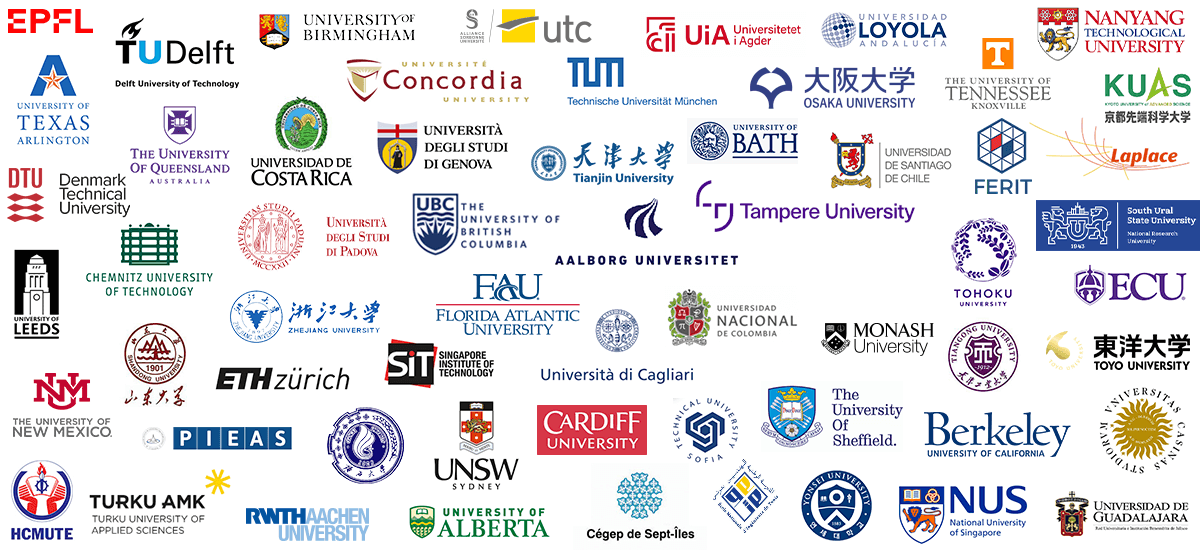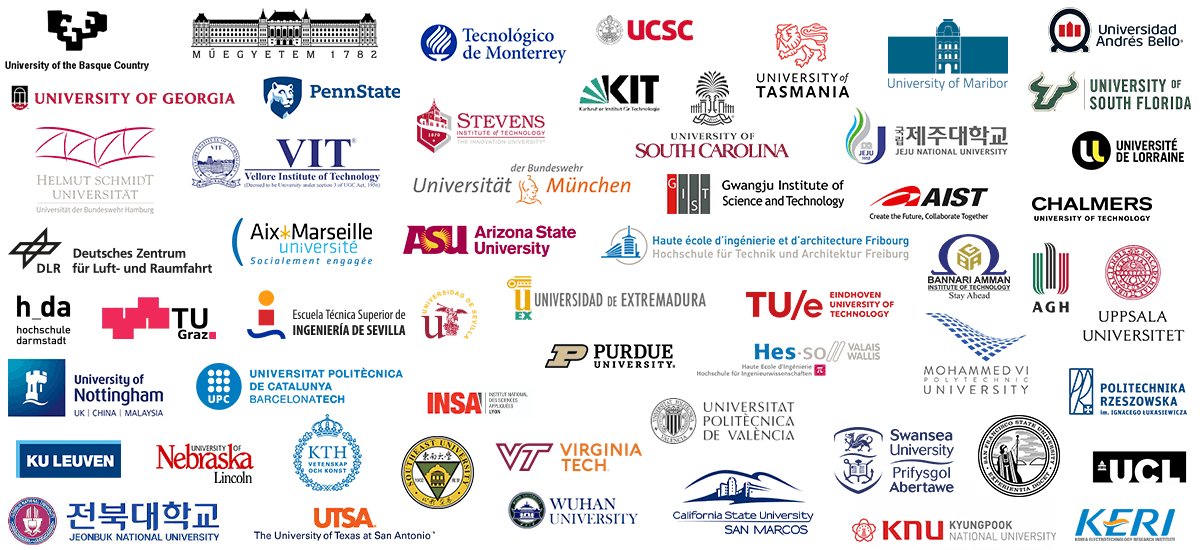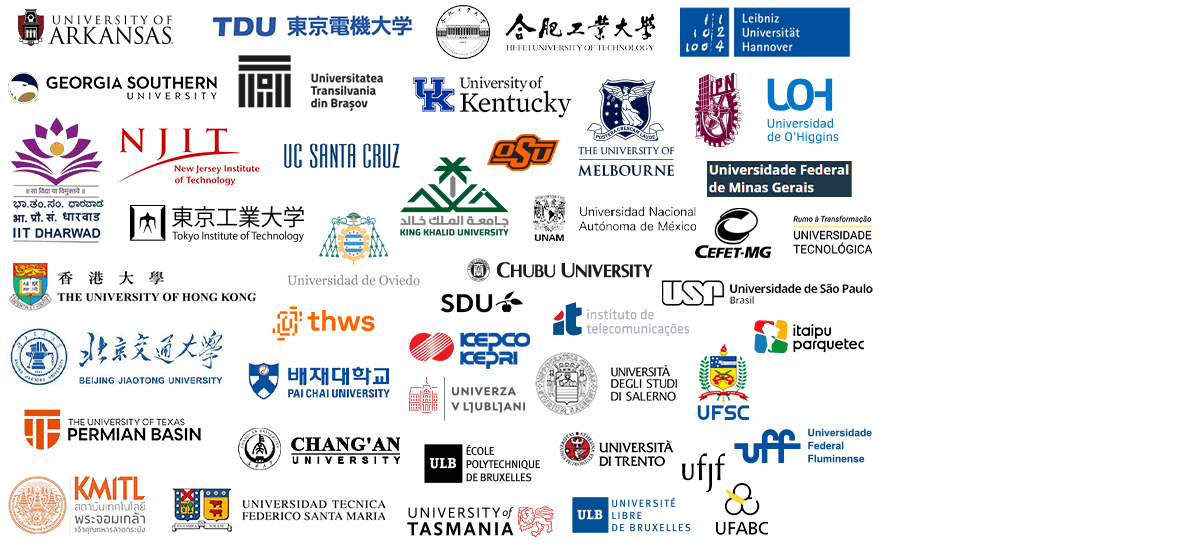Existing customers worldwide
imperix in a few figures


Customers in 42 countries

58MW installed
power worldwide

Academic customers
University of Alberta
Concordia University
University of British Columbia
Cégep de Sept-îles
University of Windsor
USA
Arizona State University
California State University San Marcos
East Carolina University
Florida Atlantic University
Georgia Southern University
New Jersey Institute of Technology NJIT
Oklahoma State University
Purdue University
Pennsylvania State University
SFU San Francisco State University
Stevens Institute of Technology
University of Arkansas
University of California Santa Cruz
University of Kentucki
University of Texas
University of Texas Arlington
University of Texas Permian Bassin
University of Texas at San Antonio
University of Georgia
University of South Florida
University of New Mexico
University of Nebraska
University of Tennessee
USC University of South Carolina
Virginia Polytechnic Institute & State University
Mexico
Instituto Politecnico Nacional
Tecnológico de Monterrey
Universidad de Guadalajara
Universidad Nacional Autónoma de México
Brazil
Sao Paulo University
Colombia
Universidad Nacional de Colombia
Chile
UCSC University
UNAB Universidad Andres Bello
Universidad de O’Higgins
Universidad de Santiago de Chile
Universidad Técnica Federico Santa María
Costa Rica
University of Costa Rica
Cardiff University
College of Engineering Swansea University Bay
The University of Sheffield
University College London
University of Birmingham
University of Bath
University of Leeds
Norway
Universitetet i Agder
Finland
Tampere University of Technology
Turku AMK University
Sweden
Chalmers University of Technology
KTH Royal Academy of Technologies
Uppsala University
The Netherlands
TU Delft
TU Eindhoven
Denmark
Aalborg University
Technical University of Denmark
University of Southern Denmark
Germany
Darmstadt University of applied science
Deutsches Zentrum für Luft- und Raumfahrt (DLR)
Helmut-Schmidt-Universität
KIT Karlsruher Institut Technologie
RWTH Aachen University
Technical University of Chemnitz
Technische Universität München
Technical University of Applied Sciences Würzburg-Schweinfurt
Univesity of Bremen
Universität der Bundeswehr München
Technische Hochschule Würzburg
Leibniz Universität Hannover
France
Aix Marseille Université
INSA Lyon
Laplace
Université de Lorraine
Université Technologie Compiègne
Belgium
KU Leuven
Ecole Polytechnique de Bruxelles ULB
Université Libre de Bruxelles ULB
Slovenia
University of Maribor
University of Ljubljana
Morocco
Université Mohammed VI Polytechnique
South Arabia
King Khalid University
Austria
TU Graz
Switzerland
ETH – Swiss Federal Institute of Technology in Zurich
EPFL – École polytechnique fédérale de Lausanne
HESSO
HEIA
Italy
Universita di Cassino
University of Cagliari
University of Padova
Università degli studi di Genova
University of Trento
University of Salerno
Spain
Escola d’Enginyeria de Barcelona Est
Escuela Tecnica Superior de Ingenieria
University of the Basque Country
University of Extremadura
Universidad Loyola
Universidad de Oviedo
Universitat Politecnica Valencia
Universidad Pública de Navarra
Hungary
Budapest University
Bulgaria
Technical University of Sofia
Croatia
FERIT – Faculty of Electrical Engineering
Poland
AGH University of Science and Technology
University of Technology in Rzeszów
Portugal
Instituto de Telecomunicaçoes
Romania
Transilvania Universty Brasov
Tunisia
Ecole Nationale d’Ingénieurs
Russia
South Ural University
Kuwait
Public Authority for Applied Education and Training (PAAET)
Australia
University of Queensland
University of Melbourne
University of Tasmania
UNSW
Monash University
India
Bannari Amaan Institute of Technology
Indian Institute of Technology Dharwad (IITDH)
Vellore Institute of Technology (VIT)
China
Beijing Jiaotong University
Beijing Science & Technology University
Chang’an University
Guangxi University
Nottingham Ningbo University
Shandong University
Southeast Universtity
Tianjin University
Tiangong University
University of Hong Kong
Wuhan University
Zheijang University
Hefei University of Technology
South Korea
Gwangju Institute of Science and Technology (GIST)
Jeju National University
Jeonbuk Natl. University
Kepco Research Institute KEPRI
Korea Electrotechnology Research Institute
Kyungpook National University
Paichai University
Yonsei University
Singapore
SIT Singapore Institute of Technology
Nanyang Technological University
NUS National University of Singapore
Berkeley Education Alliance for Research
Japan
AIST – Fukushima Renewable Energy Institute
Chubu University
KUAS Kyoto University
Osaka University
Tokyo Denki University
Tokyo Institute of Technology (TITECH)
Toyo University
Tohoku University
Thailand
KMITL
Vietnam
HCMC University
Pakistan
PIEAS Pakistan Institute of Engineering
Industrial customers

France
ArianeGroup
CEA Liten
Comeca Group
Eiffage Energie Systèmes
GE Medical
Safran
Scalian
Schneider Electric
SuperGrid Institute
Traftor Europe
The Netherlands
MI Partners
KEMA Labs
VONK EUA
Ireland
Analog Devices
Italy
Danieli Automation
CSEM
Daphne Technology
EMS
Greenmotion
H55
Maxwell technologies
Schaffner SA
Sécheron
Speedgoat
Sunon Swiss SA
Germany
Bosch GmbH
Hilite GmbH
SMA Solar Technology
Steremat Induktion
Spain
Fundacion Tecnalia
Monolithic Power Spain SL
Vector Tech
UK
Rexel UK Limited
Fronius International GmbH
KTM
SAL Silicon Austria Labs
Bulgaria
YottaVolt Ltd
Hungary
MVM Ungarian Electricity
China, Germany
GEIRI
Kuka China R&D
Unitech Embedded Consulting Service Co., Ltd
Japan
Hitachi Research Laboratory
JAEA Japan Atomic Energy Agency
Malaysia
TNB Research
CSIRO
Singapore
Rolls Royce
USA
Allied Motion
Argonne National Laboratory
General Electrodynamics Corporation
NAVFAC
Maglev Aero Inc
Oak Ridge National Laoratory
RCT Systems
Sandia National Laboratories
Tesla
South Korea
ENTEC Electric & Electronic
K-GFM Co., Ltd
KIER – Korea Instute of Energy Research
KTL – Korea Testing Laboratory
LG Magna
LS Electric
Pionelectric Co, Ltd



